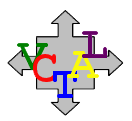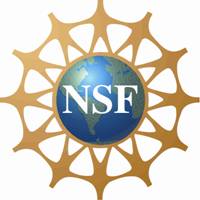
VCTAL is
developing a set of instructional modules, mini-modules, and (ultimately) a book
for use in high school classrooms. The modules will cultivate a facility with
computational thinking in students across different grade levels and subject
areas.
What is computational thinking?
 Computational thinking
is a high level thought process that considers the world in computational terms.
It begins with learning to see opportunities to compute something and relates to
mathematical thinking in its use of abstraction, decomposition, measurement and
modeling, but is more directly cognizant of the need to compute and the
potential benefits of doing so.
Read more about computational thinking.
Computational thinking
is a high level thought process that considers the world in computational terms.
It begins with learning to see opportunities to compute something and relates to
mathematical thinking in its use of abstraction, decomposition, measurement and
modeling, but is more directly cognizant of the need to compute and the
potential benefits of doing so.
Read more about computational thinking.
VCTAL Project Activities:
-
Developing, testing, and implementing an innovative mix of short (roughly one week) instructional modules for grades 9-12, with student and teacher versions and short “teasers” or mini-modules associated with each module.
Hosting Student Prototyping Workshops during the summer to assist authors in writing the modules, teachers in teaching them, and everyone in understanding the connection between the materials and students.
 Evaluating the influence of VCTAL materials on diverse students’ awareness of computational thinking opportunities and interest in related technical fields.
Evaluating the influence of VCTAL materials on diverse students’ awareness of computational thinking opportunities and interest in related technical fields.Contributing these modules, mini-modules, book, and related resources to repositories for effective materials and practices in computational thinking and broadening participation in technical fields.
VCTAL Project Goals:
Broadening participation in computer science and other computational disciplines by:
-
Producing materials that teachers can use to engage students and stimulate awareness of opportunities to think computationally.
Making computational thinking relevant to students by offering examples that show its use woven throughout daily life.
Widely disseminating VCTAL modules.
Download VCTAL flyer
To learn more contact us
 This material is based in part upon work supported by the National Science
Foundation under
Grant Number DRL 1020201. Any opinions, findings, and conclusions or
recommendations
expressed in this material are those of the author(s) and do not necessarily
reflect the views
of the National Science Foundation.
This material is based in part upon work supported by the National Science
Foundation under
Grant Number DRL 1020201. Any opinions, findings, and conclusions or
recommendations
expressed in this material are those of the author(s) and do not necessarily
reflect the views
of the National Science Foundation.
